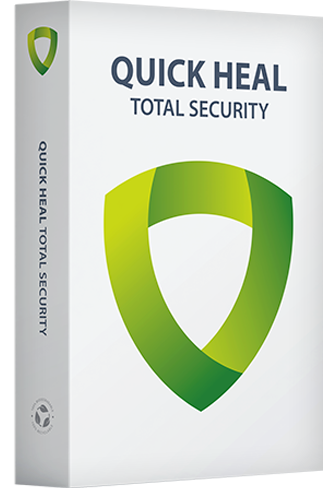Quick Heal Total Security 1 User 1 Year
Original price was: ₹2,299.82.₹849.60Current price is: ₹849.60. GST Included
In stock
Ransomware Protection
The Anti-ransomware feature uses Quick Heal’s behavior-based detection technology that analyzes the behavior of programs in real time. This helps in detecting and blocking threats such as ransomware.
Web Security
Automatically detects unsafe and potentially dangerous websites, and prevents you from visiting them.
Email Security
Efficiently blocks emails that might carry infected attachments or links to compromised or fake and phishing websites.
Safe Banking
Protects your online banking activities from fraudulent websites and malicious programs that steal financial information.
Browser Sandbox
Runs your Internet browsers in a secure, virtual environment that acts like a shield between your PC’s operating system and malicious downloads.
Data Theft Protection
Block unauthorized copying of data from your computer to unauthorized USB drives. This not only ensures data security but also reduces the risk of transfer of any harmful files.
Parental Control
The Parental Control feature to restrict children from visiting unwanted websites ,accessing applications, and to fix a timetable based on which, children can access the computer on particular days and time.
Firewall
Firewall blocks external threats that try to reach your computer over the Internet. It also blocks threats that may arise within networks that are connected to your system.
Malware Protection
The existing Malware Protection of Quick Heal is now enhanced and offers more protection to your PC against spyware, adware, keyloggers, riskware, and other malicious programs.
Anti-Keylogger
Efficiently prevents programs called keyloggers from recording what you type on your keyboard while you are doing online banking or shopping or simply browsing the Internet.
Improved Scan Engine
Scans files and folders in lesser time without using too much system resources.
Advanced DNAScan
Quick Heal DNAScan technology detects and blocks unknown threats. It uses a combination of behavioral and characteristic inspection and monitoring of unsafe programs.
Vulnerability Scan
The Operating System (OS) settings and other applications in your system might have security vulnerabilities or weaknesses. Detect & fix vulnerabilities that could be present in the OS settings.
Privacy Protection
Securely deletes sensitive data to prevent their recovery by any recovery tools. This ensures complete security and confidentiality of your valuable data.
Flash Drive Protection
Stay safe against infected USB drives. This feature automatically scans external drives the moment they are connected to your PC. It also blocks autorun infections.
Safe Mode Protection
This facility stops unauthorized users from changing Quick Heal security settings when the system is running on Safe Mode.
Enhanced Self-Protection
Protects Quick Heal’s running processes and services.
Silent Mode
Suppresses prompts and notifications from Quick Heal for uninterrupted PC usage. This does not affect the security level of your system.
Import and Export Settings
You can export Quick Heal security settings from a single computer and import it to other computers.
Quick Heal Remote Device Management (RDM)
This is a free portal where you can add your Quick Heal enabled device, view its current status, and get notified of any critical situation such as malware infections.
PCTuner
Speed up your PC and boost its performance for resource-intensive tasks with PCTuner, a user-friendly PC optimization tool.
PC2Mobile Scan
You can scan and clean your mobile device via your PC. Connect your device to your PC, search for it, and clean detected malware infections. PC2Mobile Scan supports Windows, Android, iOS, BlackBerry, and Symbian devices.
System requirements for various Microsoft Windows OS
Windows 10
- Processor: 1 gigahertz (GHz) or faster
- RAM: 1 gigabyte (GB) for 32-bit or 2 GB for 64-bit
Windows 8.1 / Windows 8
- Processor: 1 GHz or faster
- RAM: 1 GB for 32-bit or 2 GB for 64-bit
Windows 7
- Processor: 1 GHz or faster
- RAM: 1 GB for 32-bit or 2 GB for 64-bit
Windows Vista
- Processor: 1 GHz or faster
- RAM: 1 GB
Windows XP
(Service Pack 2 and later)
- Processor: 300 Megahertz (MHz) Pentium or faster
- RAM: 512 MB
Windows 2000
(Service Pack 4)
- Processor: 300 MHz Pentium or faster
- RAM: 512 MB



